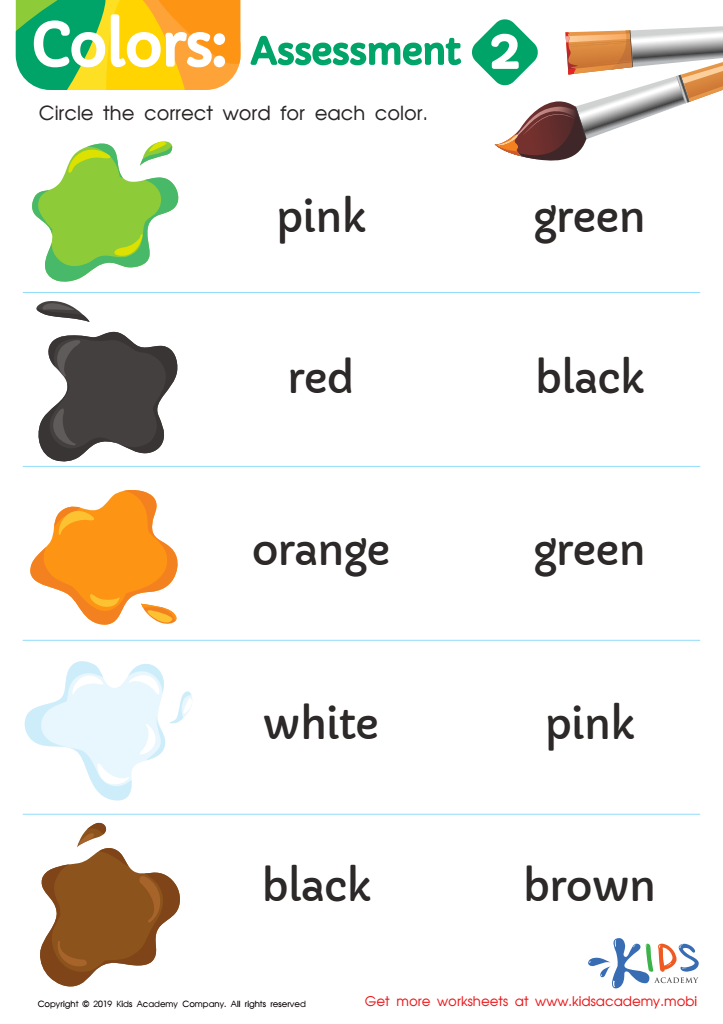Following instructions Easy Color Words Worksheets for Ages 4-8
4 filtered results
-
From - To
Introduce young learners to the vibrant world of colors while honing their ability to follow instructions with our "Following Instructions Easy Color Words Worksheets." Perfect for ages 4-8, these engaging worksheets are designed to make learning fun and effective. Each activity encourages children to recognize and name colors while adhering to simple instructions, boosting their comprehension and listening skills. Ideal for early learners, ESL students, and little budding artists, our worksheets blend educational value with an enjoyable experience. Help your child master color vocabulary effortlessly and build a solid foundation for future learning. Download and start learning today!


Red and Blue Coloring Fun Worksheet


Yellow and Green Coloring Fun Worksheet


Colors: Assessment 2 Worksheet


Purple and Orange Coloring Fun Worksheet
Following Instructions Easy Color Words for Ages 4-8 is a vital educational precursor that offers several benefits for young learners. First and foremost, mastering the ability to follow instructions builds foundational cognitive skills crucial for future academic success. When children understand and adhere to instructions, they develop attentiveness, listening skills, and the ability to process detailed commands—all integral to effective learning.
Color words, specifically, introduce children to basic vocabulary and enchanted visual memory. They learn not only color identification but also the significant correlation between written words and their meanings. This lays down the groundwork for reading fluency and comprehension, fostering an affinity for reading early on.
Additionally, engaging with instructional color activities encourages fine motor skill development. When kids color within the lines or complete tasks requiring specific color choices, they enhance their hand-eye coordination and precise motor control, which are necessary for writing and other intricate tasks.
Finally, social-emotional skills are honed as children frequently work collaboratively with peers or heed directions from adults. This cooperative dynamic nurtures patience, respect for others, and the importance of following rules—key components to effective classroom management and social interactions.
By prioritizing these early bases, parents, and teachers set children on a path of lifelong learning competency and improved academic and social proficiency.
 Assign to My Students
Assign to My Students











